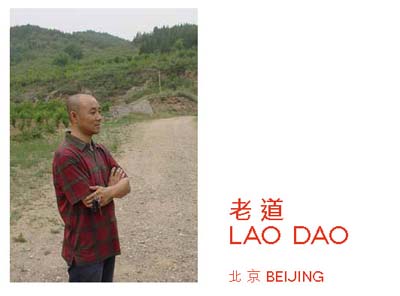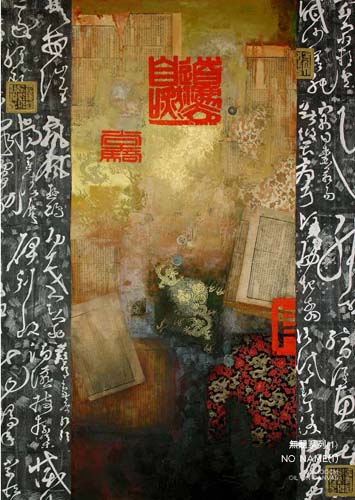
1968年出生於黑龍江省。
現為中國徐悲鴻國際藝術研究會理事。1992年畢業於中央美術學院徐悲鴻畫室,師承著名畫家馮法祀教授。1990年中央美術學院畫廊舉辦「六人畫展」。1991年參加在加拿大舉辦的「徐悲鴻畫室作品展」。1992年參加新加坡的「徐悲鴻畫室師生優秀作品展」。1994年在北京德國大使館舉行「中德藝術交流展」。1995年參加新加坡華人藝術節。1996年意大利大使館舉辦藝術活動。1998年於北京美國大使館舉辦個展。數十幅作品被國內外人士及畫廊收藏。
Male, also called Li Zongjun, born in
Heilongjiang Province in 1968. Now he is
a committee member of the Xu Beihong
International Society of Art.
He was graduated from the Central
Academy of Art in 1992. He was a student
of the famous painting msater Professor
Feng Fasi.
He has held his solo exhibitions in Beijing,
and participated in many international
exhibitions overseas, such as in Canada,
Singapore, Italy, etc. A few dozens of his
works have been collected by collectors
and galleries.


untitled(10)
130x100cm
oil on canvas
untitled (1)
130X100CM
oil ON CANVAS
從傳統三維空間藝術向現代多維藝術空間遷徙,以平面性的複述形式,將材料化的實物符號從一種語境轉化為另一種屬於自己的獨特語境。以往所有的藝術形式,傳統戒律對我而言失去意義。取而代之以自我體驗與自我表現,觀念變為實驗,思索空間更廣闊,材料運用更自由,藝術生命永恆的價值在於不斷激起創造活力和希望,創造新的形式語言,完成個性化的視覺圖式。
閉目冥悟,自性清淨,萬法唯心,心生萬法,心致行隨,心物交融,展開畫內畫中畫,踏破天中天外天,觀照心靈圖景,尋找不可知的未來視覺藝術空間,天成自然。
老道的作品突破傳統的主題與情節,脫離舊有程式化的藝術語言,找到了自己的個性。他喜以門為題材,用它來作為中國文化的一種符號象徵,用油畫作基本媒介,加以其他材料,如印製拓片、地契等綜合製成一幅幅表達歲月剝蝕的滄然的畫面,暗示對中國文化的反思、對封閉的反叛與沉思,不但有深層的精神意思,更有美學的創新價值。
From the traditional three-dimensional
art space to nowadays’ multidimensional,
which using twodimensional
presentation to turn the
symbol of realistic object into our unique
context. All previous art forms and
traditional precepts are meaningless to
Lao. Instead, self-expression and selfexperience,
ideas into experimental,
broadening imagination, more flexible to
use of materials, the value of art eternal
life is constantly provoke creative
vitality and hope to create new forms
of language, complete the personalized
visual image.
Closing our eyes, clear the mind,
following the heart, exploring the
possibility with nature.
Lao has made a breakthrough in the
choice of subject matters and storyline
of oil paintings. Deviating from the old
formula and language of art, he has
created his own style. He likes to use
door as his subject. He uses it as a
symbol to represent Chinese culture.
Adding other media such as print and
paper, ink rubbing plate, title deed of
old land, etc, onto the canvas, he has
created works which reflect the erosion
of time, which call upon the thoughts
on traditional culture and revolt against
closed minds. His works possess not
only aesthetical beauty but also deep
social meaning.